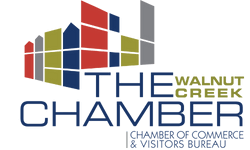Unraveling the mysteries behind sewer backups, caused by stormwater runoff, drain pipes, sewage gas, and underground pipes, reveals a world of causes, effects, and solutions. Understanding this science is crucial for homeowners and communities alike. From historical sewage systems to modern-day challenges, the evolution of sewer backups, stormwater runoff, and toilets mirrors societal progress. The repercussions of these backups, common causes, can be extensive, impacting health, finances, and the environment. By delving into the common causes and sewage backup underlying reasons for these incidents, we can uncover effective strategies to prevent and address them. Join us on a journey through the intricate web of common causes contributing to sewer backups and discover how knowledge can empower us to safeguard our homes and neighborhoods.
Table of Contents
ToggleUnderstanding Sewer Backups
A. Common Causes
Pipe Damage
- Identify signs of pipe damage such as leaks, corrosion, or unusual odors.
- Pipe material and age contribute to potential damage, leading to sewer backups.
- Promptly address pipe damage to prevent sewer backups from occurring.
Clogs
- These issues can disrupt the flow of wastewater, causing sewage backup within the sewer system.
- Use preventive measures like drain strainers to avoid clogs.
- Efficiently clear clogs with plungers or drain snakes.
Tree Roots
- Monitor signs of tree root infiltration like slow drainage or gurgling noises.
- Professional services can cut down intrusive roots and prevent future issues.
- Consider using root-resistant materials when replacing damaged pipes.
B. Health Risks
- Understand the health hazards of exposure to sewage backups.
- Take precautions at home to avoid contact with contaminated water, such as sewage backup, to protect health.
- Seek medical attention after exposure to sewage to prevent health complications.
C. Safety Concerns
- Prioritize safety by wearing protective gear during sewage backup cleanup.
- Ensure proper ventilation in affected areas to reduce health risks effectively.
- Follow safety protocols during cleanup procedures to minimize accidents.
Severe Pipe Damage
A. Causes
Sewer backups result from various factors such as pipe damage, clogs, and tree root infiltration. These issues can disrupt the flow of wastewater, causing sewage backup within the sewer system. Soil shifting or construction activities near sewer lines can also contribute to backups. Identifying the specific cause is crucial for implementing effective solutions tailored to the problem at hand.
B. Prevention
To prevent sewer backups, consider installing backwater prevention valves. These valves help in controlling the flow of sewage, reducing the risk of backups during heavy rainfall or flooding. Educating individuals on proper disposal practices is essential to avoid clogs and subsequent backups. Regularly inspecting sewer lines allows for early detection of potential issues, enabling prompt intervention before a backup occurs.
C. Solutions
Addressing severe pipe damage involves options like repairing or replacing damaged sewer pipes. This proactive approach helps in preventing future backups caused by structural issues. Adopting preventive strategies, such as regular maintenance and inspections, is key to maintaining sewer line integrity and minimizing the risk of backups. For complex problems, collaborating with professionals experienced in sewer systems can provide long-term solutions to recurring backup issues.
Clogs As Culprits
A. Identifying Clogs
Learn to identify signs of clogs such as slow drainage or gurgling sounds. Use tools like cameras or probes to locate clogs within sewer lines. Consult experts for accurate identification of clogs causing backups.
B. Preventing Clogs
Implement preventive measures like avoiding pouring grease down drains. Educate on the importance of proper disposal habits to prevent clogs. Regularly maintain drains and sewer lines to prevent clogs from forming.
C. Clearing Clogs
Utilize effective tools like plungers or drain snakes to clear clogs. Consider using environmentally friendly drain cleaners to dissolve clogs. Seek professional assistance for stubborn clogs that require advanced clearing techniques.
Tree Roots Invasion
A. Detection
Tree root invasion into sewer lines can be detected using advanced methods like video inspections. These inspections allow for a close examination of the sewer line’s condition. Look out for warning signs such as foul odors or slow drainage, indicating potential tree root intrusion. Acting promptly upon detecting these issues is crucial to prevent further damage.
B. Prevention Strategies
To prevent tree roots from invading sewer lines, it is essential to develop a comprehensive prevention plan. This plan should include regular maintenance and inspections to identify and address any root intrusion early on. Educating homeowners on the importance of preventive measures can help them understand the risks associated with tree roots in sewer lines. Implementing prevention strategies tailored to specific risk factors in the area can further reduce the chances of backups.
C. Removal Solutions
When faced with tree root invasion causing sewage backups, consider effective removal solutions such as professional cleaning services. These services can efficiently remove tree roots and restore proper flow in the sewer line. For minor incidents, DIY cleanup methods may be sufficient to address the issue temporarily. However, it is crucial to prioritize thorough cleaning to eliminate any health risks associated with sewage backups.
Health Dangers Of Backups
A. Bacterial Growth
Sewage backups can lead to rapid bacterial growth, posing serious health risks. The presence of bacteria in sewage can cause illnesses such as gastroenteritis. To combat this, it is crucial to implement disinfection protocols after a backup occurs. These protocols help eliminate harmful bacteria, safeguarding against potential health hazards. For a more thorough approach, consider hiring professional cleaning services specialized in sewage cleanup. Their expertise ensures the complete removal of bacteria, reducing health risks significantly.
B. Water Contamination
One of the significant dangers associated with sewer backups is water contamination. Contaminated water from sewage backups carries various pathogens and pollutants that can endanger human health. It is essential to take immediate precautions to prevent contaminated water from spreading to clean areas within your property. conducting water testing post-backup is crucial to evaluate the contamination levels accurately. This testing helps determine the extent of contamination and guides further cleanup and remediation efforts.
Safety Measures
A. Personal Protection
Prioritize personal protection by wearing gloves, masks, and protective clothing during cleanup. Educate individuals on the crucial role of hand hygiene after being exposed to sewage backups. Consider vaccinations against diseases linked to sewage exposure for added protection.
B. Home Safety
Ensure home safety by promptly addressing sewer line issues to prevent backups. Implement preventive measures such as installing backwater prevention valves in the plumbing system. Educate all household members on safety protocols to follow in case of a sewer backup emergency.
Preventing Sewage Backups
A. Regular Maintenance
Establish a routine maintenance schedule for inspecting and cleaning sewer lines. Regular maintenance helps identify potential issues early, preventing costly backups. Professional services can ensure optimal sewer line performance, reducing the risk of backups.
Consider professional maintenance services to ensure optimal sewer line performance. Professional maintenance involves thorough inspections and cleaning to keep sewer lines clear. By investing in professional services, homeowners can prevent sewage backups effectively.
Regularly check for signs of potential issues to prevent sewer backups. Regular inspections allow for early detection of problems such as clogs or leaks. By staying vigilant and addressing issues promptly, homeowners can avoid the inconvenience of sewage backups.
B. Smart Disposal Habits
Promote smart disposal habits like avoiding flushing non-flushable items. Proper disposal prevents blockages in sewer lines, reducing the likelihood of backups. Educating residents on what not to flush is crucial for maintaining a healthy sewage system.
Educate on proper disposal of cooking oil and grease to prevent clogs. Cooking oil and grease can solidify in pipes, leading to blockages and backups. Encouraging residents to dispose of these substances properly helps maintain smooth sewage flow.
Encourage responsible waste disposal practices to maintain sewer system efficiency. Responsible waste disposal includes avoiding disposing of items that can cause blockages. By promoting good disposal habits, communities can prevent sewer system failures.
C. Professional Inspections
Schedule regular inspections by professionals to detect early signs of sewer line issues. Professional inspections help identify potential problems before they escalate into major backups. Regular assessments are key to maintaining a functional sewage system.
Consider video inspections to assess the condition of sewer pipes accurately. Video inspections provide detailed insights into the state of sewer lines without invasive measures. This technology allows for precise identification of issues contributing to backups.
Rely on expert recommendations for preventive maintenance based on inspection findings. Expert advice following inspections guides homeowners on preventive measures against backups. Implementing recommended maintenance strategies can significantly reduce the risk of sewage backups.
Immediate Actions For Backups
A. Emergency Response
Develop an emergency response plan to tackle sudden sewer backup incidents effectively. Ensure the plan includes steps like shutting off water sources and contacting relevant authorities promptly.
In case of severe sewer backups, contact emergency services immediately. Quick action can prevent further damage and ensure the safety of individuals in the affected area.
Evacuate the area if necessary during emergencies. Prioritize safety above all else to mitigate risks associated with sewer backups and contamination.
B. Cleanup Procedures
Follow proper cleanup procedures meticulously to eliminate sewage backup residues thoroughly. Use appropriate cleaning agents and protective gear to minimize health hazards.
Dispose of contaminated materials safely following local regulations to prevent environmental pollution and health risks. Proper disposal is crucial in preventing further contamination or the spread of diseases.
Consider hiring professional cleanup services for extensive sewer backup cleanup tasks. Professionals have the expertise and equipment to handle hazardous waste safely and efficiently.
Long-term Solutions
A. Infrastructure Upgrades
Upgrading infrastructure plays a crucial role in preventing sewer backups in the long term. By replacing old pipes with newer, more durable materials, municipalities can significantly reduce the risk of blockages and overflows. These modern materials are designed to withstand corrosion and damage better than their outdated counterparts.
To further enhance the resilience of sewer systems, municipalities should also consider installing additional protection mechanisms. These mechanisms act as safeguards against potential issues that could lead to backups. By investing in such preventative measures, cities can proactively address vulnerabilities within their sewer networks.
Collaborating with engineering experts is essential for designing and implementing effective infrastructure upgrades. These professionals bring specialized knowledge and experience to the table, ensuring that the improvements made to the sewer system are strategically planned and executed. By leveraging their expertise, municipalities can optimize the efficiency and longevity of their sewer infrastructure.
B. Sustainable Practices
Embracing sustainable practices is key to ensuring the long-term health of sewer systems and mitigating their environmental impact. By adopting eco-friendly solutions for maintenance activities, cities can minimize their carbon footprint while effectively managing sewer backups. These sustainable practices not only benefit the environment but also contribute to cost savings over time.
Incorporating eco-friendly technologies into sewer system management is another critical aspect of promoting sustainability. From using environmentally safe cleaning products to implementing green infrastructure solutions, there are various ways to make sewer systems more sustainable. By prioritizing these initiatives, municipalities can protect both public health and natural ecosystems.
Promoting sustainability in sewer system management involves fostering a culture of responsibility among stakeholders. By encouraging residents to practice water conservation and proper waste disposal, cities can collectively work towards maintaining a cleaner and healthier environment. Educating the community about sustainable practices is essential for creating lasting change and ensuring the continued functionality of sewer systems.
Final Remarks
You’ve learned about the causes, effects, and solutions for sewer backups. From severe pipe damage to tree root invasion, these issues can lead to health hazards and safety concerns. By understanding the risks and taking preventive measures, you can protect your property and loved ones from the dangers of sewage backups. Remember to act swiftly in case of emergencies and implement long-term solutions to avoid future incidents. Stay informed, stay safe, and safeguard your home from potential sewer backup disasters.
Take charge of your property’s well-being by applying the safety measures discussed and adopting long-term solutions to prevent sewer backups. Your proactive approach can save you from costly repairs and health risks down the line. Stay vigilant, prioritize maintenance, and ensure a clean and safe environment for you and your family.
Frequently Asked Questions
1. What Are The Common Causes Of Sewer Backups?
Sewer backups are often caused by severe pipe damage, clogs from various materials, and invasive tree roots. Understanding these factors can help prevent sewage issues and maintain a healthy plumbing system.
2. How Do Sewer Backups Affect Health?
Sewer backups pose serious health risks due to exposure to harmful bacteria, viruses, and contaminants present in sewage. Immediate actions should be taken when facing a backup to prevent health complications for you and your family.
3. What Safety Measures Should Be Taken During Sewer Backups?
Safety is paramount during sewer backups. Avoid contact with sewage water, wear protective gear if necessary, ventilate the area well, and seek professional help promptly. Prioritize your well-being and that of others in such situations.
4. How Can One Prevent Sewage Backups At Home?
Preventing sewage backups involves regular maintenance of your plumbing system, proper disposal of waste, avoiding flushing non-biodegradable items, installing backwater valves, and scheduling professional inspections. These preventive measures can save you from costly repairs and health hazards.
5. What Immediate Actions Should One Take When Facing A Sewer Backup?
Upon discovering a sewer backup, immediately stop using water sources in the affected area, turn off electrical power if safe to do so, avoid contact with contaminated water, and contact a professional plumber for assistance. Quick action can minimize damage and health risks.
Experience Premier Solutions for Sewer Backups with Garcia Plumbing and Home Restoration!
At Garcia Plumbing and Home Restoration, we recognize the chaos and discomfort brought on by unexpected sewer backups in your home. Our team, famous for its skill in quickly and effectively resolving sewer backups, is committed to reinstating the health and efficiency of your home’s plumbing system.
Our dedication at Garcia Plumbing and Home Restoration goes beyond just addressing the immediate issue; we strive to ensure the long-term dependability and functionality of your plumbing. We boast an exceptional reputation in Contra Costa County for our commitment to excellence, our profound understanding of plumbing challenges, and the trust we’ve established with numerous satisfied customers. Don’t let the worry of sewer backups disturb your home’s harmony. Contact us today for top-tier sewer backup solutions and regain the comfort and safety of a fully operational plumbing system!




